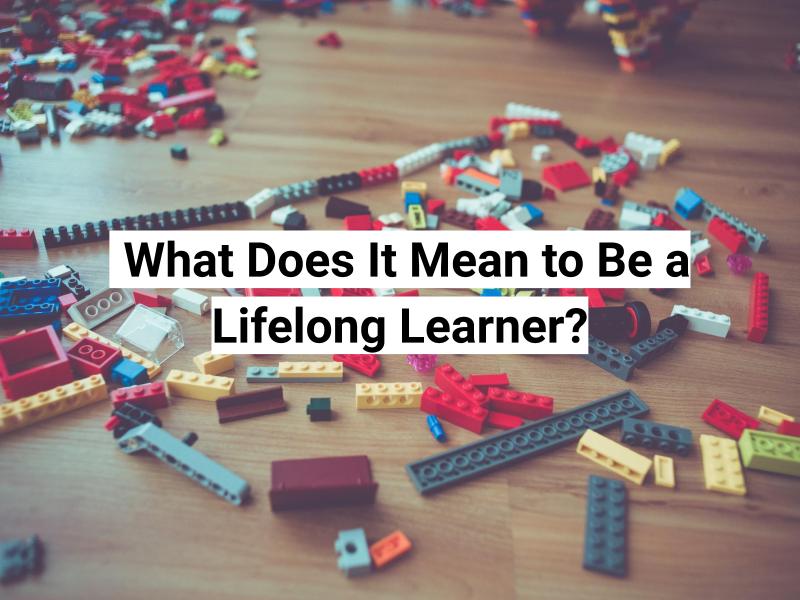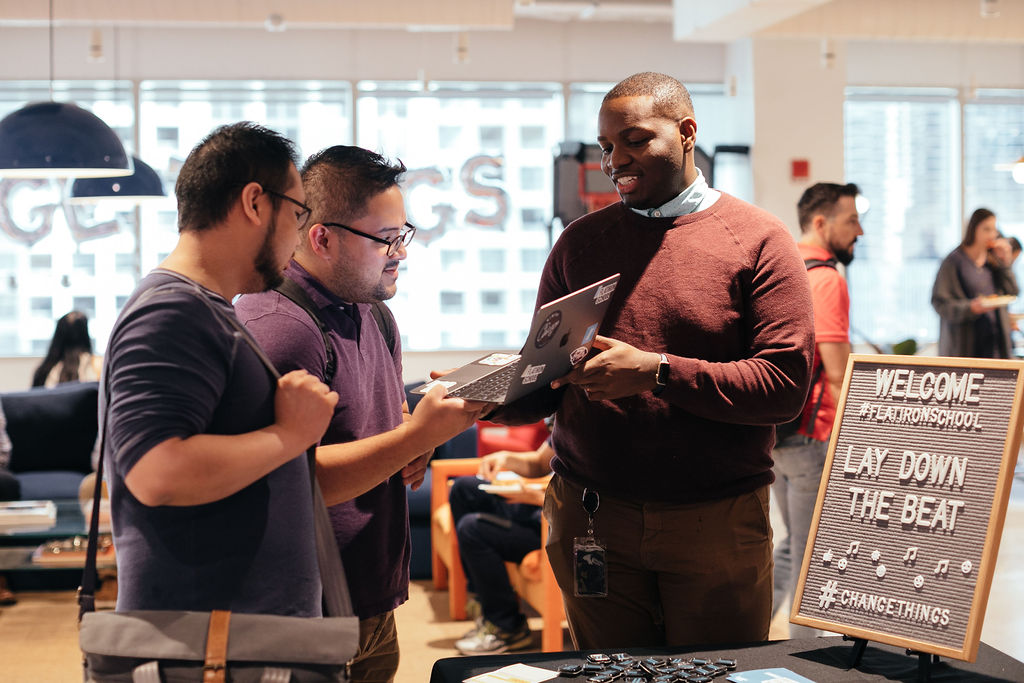At Flatiron School, we do more than just teach software engineering, data science, or UX/UI design skills to students. While we help students start careers in tech, and change their lives in the process, we also teach them how to become a lifelong learner.
This growth mindset helps our students to continually improve as developers, data scientists, and designers. It also helps them develop as people and establish deep connections with their colleagues. Here are five ways we help our students become lifelong learners.

It's a state of mind
Bear with us as we talk about something that sounds like a cliche. But, being a lifelong learner is very much a state of mind. It’s that urge to turn to Google to learn more about that random thought you had in the middle of the night. What’s at the core of Jupiter? How did the English language evolve? Can I code a website from scratch?
That curiosity is a catalyst for you to do something bigger. It’s the first step in embracing something new and changing your life. But, you have a long road ahead of you and you’ll need to maintain that passion. The logs to keep that fire going, if you will, can be found in the motivation for what you want to do.
Ask yourself “why” you want to do something. At Flatiron School, our students want to gain the software engineering, data science, or UX/UI design skills they need to change their lives and start careers in design and tech. That’s an impressive goal that requires hard work— even when faced with new challenges. After all, many of our students have had no prior experience in tech or with code. They’re going to face obstacles, but they do overcome them. And they do that by never forgetting the “why.” Life will get in the way and you need to keep your motivation close by to keep going.
That openness and curiosity leads into empathy for others. Gain knowledge from those around you and to help you grow as you learn from others.
Above all, remember to stay positive. You’re changing your life!
Introducing Ruby

At Flatiron School, we teach Ruby as the first step to becoming a lifelong learner. We start with Ruby because it’s a simple, beautiful, and powerful language. Ruby has an easier learning curve than other programming languages and a syntax that’s easily understood. It’s also still a popular language used by many startups and larger companies. You’re not spending days just trying to decipher how to even begin learning the language. Some programming languages are notorious for their difficult syntax. Ruby has a lower barrier of entry, which means you spend more time learning how to think like a developer.
We teach the “how” and the “why” so you can create a meaningful connection with the act of learning itself. You’ll use that muscle to continue your growth as a developer for years to come.
Once you get the hang of Ruby, you can use what you learned and apply those skills to learning new languages. Because you already understand how a language works, you can transfer that knowledge to a new programming language and focus on learning the syntax. After Ruby, we introduce JavaScript, and we also provide hands on experience with key Ruby and JavaScript frameworks (Sinatra, Rails, and React) so you can become a true full-stack developer.
Be uncomfortable
Building off the first two points, you’re going to be uncomfortable when you learn something new. Think about any time you started from scratch. There’s that uncertainty about what comes next, if you’re doing it right, and if you’re any good at it. You’ll definitely reach a moment where you want to throw your hands up and quit. This hard work can’t be worth it, right?
And then you have that euphoric moment where everything falls into place and you can see it all so clearly. That moment makes all the work worth it. But, to get to that point you have to embrace being uncomfortable. Being a lifelong learner is a state of mind, after all.
As you continue on the journey of being a lifelong learner, you’ll also figure out what you can learn on your know and what will need more support. Luckily, you can find a course or a community to help you overcome any obstacle.
Build a network

Talking to strangers and asking someone to be your mentor? Talk about uncomfortable! Despite your fears, community is crucial to being a lifelong learner. You’ll need a support system to get you through the heartaches and pitfalls that come with the inherent challenges of learning something new.
We believe people learn best within a supportive and inclusive environment. If you have someone in your corner, you can handle any challenge. That’s why Learn.co, our educational platform, has built-in support features like Ask-A-Question that lets you get help in near real-time. We also focus on pair-programming exercises where you can learn with, and from, your peers. Your cohort, along with your instructors, is also your community at Flatiron School.
Of course, your education doesn’t end with the bootcamp. You’re going to continue growing as a software engineer, data scientist, or UX/UI designer and it helps to have a network around you.
Staying in touch with working professionals can expose you to new tools or ways to solve problems. Chances are they’ve already faced a bug, modeling challenge, or design ask that’s kept you up at night. You don’t have to reinvent the wheel every time. Seek help from others.
SMART goals
No advice article would be complete without at least one acronym. SMART goal setting is more than just establishing intelligent goals for yourself.
SMART stands for:
-
Specific
-
Measurable
-
Attainable
-
Relevant
-
Timely
Keep SMART in mind whenever you set goals. Be specific and really define the “why” you want to do something. Have a way to track or measure your progress. While your goal may be difficult, it shouldn’t be impossible. Your goal should fit into your life. Lastly, set deadlines so you have a clear roadmap because some goals may be accomplished in a day while others may take 15 weeks or more.

Spaced repetition is one method you can use to achieve your SMART goals. Spaced repetition uses flashcards to help you retain information. Cards you answered correctly are put into one section that’s shown less frequently. Cards you answered incorrectly, or feature newer/more difficult information, are placed in another section that’s shown more frequently. You can learn more about the process here.
By reading this, you’re already on your way to becoming a lifelong learner! Take each day as an opportunity to learn something new. If you’re interested in learning to code, we have a free Coding Bootcamp Prep course featuring over 75 hours of lessons.




